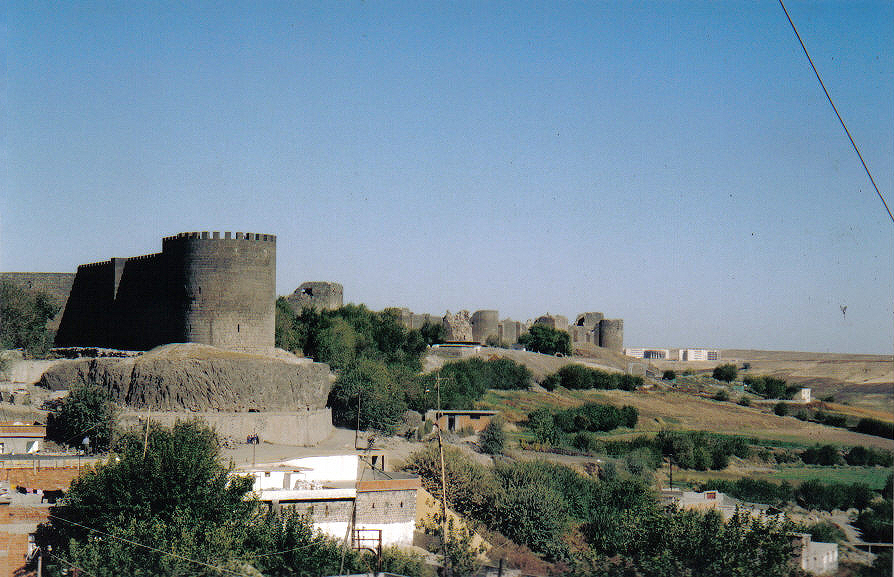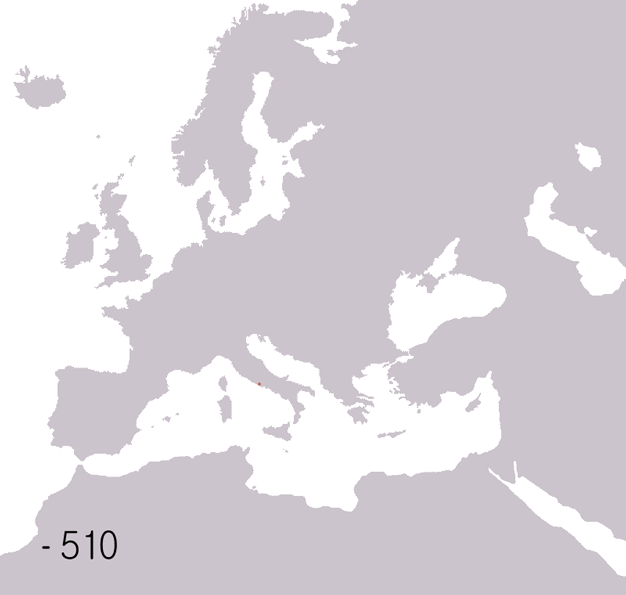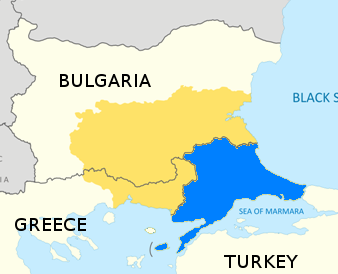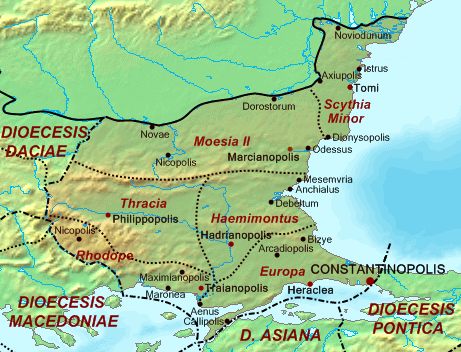|
Battle Of Adrianople
The Battle of Adrianople also known as Battle of Hadrianopolis was fought between the Eastern Roman army led by the Roman emperor Valens and Gothic rebels (largely Thervings as well as Greutungs, non-Gothic Alans, and various local rebels) led by Fritigern. The battle took place on 9 August 378 in the vicinity of Adrianople, in the Roman province of Thracia (modern Edirne in European Turkey). It ended with an overwhelming victory for the Goths and the death of Emperor Valens.Zosimus, ''Historia Nova'', book 4. As part of the Gothic War of 376–382, the battle is often considered the start of the events which led to the fall of the Western Roman Empire in the 5th century. A detailed contemporary account of the lead-up to the battle from the Roman perspective was written by Ammianus Marcellinus and forms the culminating point at the end of his history. Background In 376, the Goths, led by Alavivus and Fritigern, asked to be allowed to settle in the Eastern Roman Empir ... [...More Info...] [...Related Items...] OR: [Wikipedia] [Google] [Baidu] |
Gothic War (376–382)
The Gothic War of 376–382 was one of several Gothic Wars in Roman history in which the Goths fought against the Roman Empire. This particular conflict included the catastrophic Roman defeat at the Battle of Adrianople, which is commonly seen as a cause of the Fall of the Western Roman Empire, decline of the Western Roman Empire, although its significance is widely debated. Background In the summer of 376, a massive number of Goths arrived on the Danube River, the border of the Roman Empire, requesting asylum from the Huns. There were two groups: the Thervings led by Fritigern and Alavivus and the Greuthungi led by Alatheus and Saphrax. Eunapius states their number as 200,000 including civilians, but Peter Heather estimates that the Thervings may have had only 10,000 warriors and 50,000 people in total, with the Greuthungi about the same size. ''The Cambridge Ancient History'' places modern estimates at around 90,000 people. Noel Lenski accepts Eunapius' number as approximating ... [...More Info...] [...Related Items...] OR: [Wikipedia] [Google] [Baidu] |
Victor (magister Equitum)
Victor ( 362–383) was a Roman military officer and politician, who served the emperors Constantius II, Julian, Jovian and Valens. He was appointed consul in AD 369, alongside Valentinianus Galates. Early career and Julian's Persian campaign Born into a Sarmatian family, Victor served at the court of the emperor Constantius II as a palace official. Under Julian the Apostate, Victor was appointed '' Comes rei militaris'', a position he held from AD 362 – 363. In anticipation of the campaign against the Sassanid Empire, Julian had Victor march the Roman army from Constantinople to Antioch. When Julian arrived to take command of the expedition, Victor was placed in charge of the rearguard. On the road to Ctesiphon, he scouted ahead to ensure there were no traps laid by the Persians, and at the Battle of Ctesiphon, he led the vanguard across the river, scattering a force of Persians led by the son of king Shapur II. Victor and his fellow generals then tried to convince Julian not ... [...More Info...] [...Related Items...] OR: [Wikipedia] [Google] [Baidu] |
Foederati
''Foederati'' ( ; singular: ''foederatus'' ) were peoples and cities bound by a treaty, known as ''foedus'', with Rome. During the Roman Republic, the term identified the '' socii'', but during the Roman Empire, it was used to describe foreign states, client kingdoms or barbarian tribes to which the empire provided benefits in exchange for military assistance. The term was also used, especially under the empire, for groups of barbarian mercenaries of various sizes who were typically allowed to settle within the empire. Roman Republic In the early Roman Republic, ''foederati'' were tribes that were bound by a treaty (''foedus'' ) to come to the defence of Rome but were neither Roman colonies nor beneficiaries of Roman citizenship (''civitas''). Members of the Latini tribe were considered blood allies, but the rest were federates or '' socii''. The friction between the treaty obligations without the corresponding benefits of Romanity led to the Social War between the Romans, ... [...More Info...] [...Related Items...] OR: [Wikipedia] [Google] [Baidu] |
Huns
The Huns were a nomadic people who lived in Central Asia, the Caucasus, and Eastern Europe between the 4th and 6th centuries AD. According to European tradition, they were first reported living east of the Volga River, in an area that was part of Scythia at the time. By 370 AD, the Huns had arrived on the Volga, causing the westwards movement of Goths and Alans. By 430, they had established a vast, but short-lived, empire on the Danubian frontier of the Roman empire in Europe. Either under Hunnic hegemony, or fleeing from it, several central and eastern European peoples established kingdoms in the region, including not only Goths and Alans, but also Vandals, Gepids, Heruli, Suebians and Rugians. The Huns, especially under their King Attila, made frequent and devastating raids into the Eastern Roman Empire. In 451, they invaded the Western Roman province of Gaul, where they fought a combined army of Romans and Visigoths at the Battle of the Catalaunian Fields, and in 452, they ... [...More Info...] [...Related Items...] OR: [Wikipedia] [Google] [Baidu] |
History Of The Huns
The history of the Huns spans the time from before their first secure recorded appearance in Europe around 370 AD to after the disintegration of their empire around 469. The Huns likely entered Western Asia shortly before 370, from Central Asia: they first conquered the Goths and the Alans, pushing a number of tribes to seek refuge within the Roman Empire. In the following years, the Huns conquered most of the Germanic and Scythian tribes outside of the borders of the Roman Empire. They also launched invasions of both the Asian provinces of Rome and the Sasanian Empire in 375. Under Uldin, the first Hunnic ruler named in contemporary sources, the Huns launched a first unsuccessful large-scale raid into the Eastern Roman Empire in Europe in 408. From the 420s, the Huns were led by the brothers Octar and Ruga, who both cooperated with and threatened the Romans. Upon Ruga's death in 435, his nephews Bleda and Attila became the new rulers of the Huns, and launched a successful raid ... [...More Info...] [...Related Items...] OR: [Wikipedia] [Google] [Baidu] |
Alavivus
Alavivus (flourished in 4th century AD) was a Gothic co-king of a group of Thervingi together with Fritigern. Along with the latter he led the migration of the Thervingi from Dacia across the Danube into the Roman Empire in the late 4th century AD. Upon arrival in the Roman Empire, the Goths suffered from widespread famine, with some Gothic parents reportedly being forced to sell their children into slavery in return for rotten dog meat in order to avoid starvation. In 376, Valens' lieutenant Lupicinus invited Alavivus and Fritigern to a banquet to discuss provisions for their people, where Alavivus was assassinated. Fritigern on the other hand managed to escape, inciting a revolt which culminated with a decisive Gothic victory at the Battle of Adrianople The Battle of Adrianople also known as Battle of Hadrianopolis was fought between the Eastern Roman army led by the Roman emperor Valens and Gothic rebels (largely Thervings as well as Greutungs, non-Gothic Alans, and va ... [...More Info...] [...Related Items...] OR: [Wikipedia] [Google] [Baidu] |
Ammianus Marcellinus
Ammianus Marcellinus, occasionally anglicized as Ammian ( Greek: Αμμιανός Μαρκελλίνος; born , died 400), was a Greek and Roman soldier and historian who wrote the penultimate major historical account surviving from antiquity (preceding Procopius). Written in Latin and known as the '' Res gestae'', his work chronicled the history of Rome from the accession of Emperor Nerva in 96 to the death of Valens at the Battle of Adrianople in 378. Only the sections covering the period 353 to 378 survive. Biography Ammianus was born in the East Mediterranean, possibly in Syria or Phoenicia, around 330, into a noble family of Greek origin. Since he calls himself ''Graecus'' ( Greek), he was most likely born in a Greek-speaking area of the empire. His native language was Greek, but he also knew Latin. The surviving books of his history cover the years 353 to 378. Ammianus began his career as a military officer in the Praetorian Guard, where he gained firsthand exper ... [...More Info...] [...Related Items...] OR: [Wikipedia] [Google] [Baidu] |
Fall Of The Western Roman Empire
The fall of the Western Roman Empire, also called the fall of the Roman Empire or the fall of Rome, was the loss of central political control in the Western Roman Empire, a process in which the Empire failed to enforce its rule, and its vast territory was divided among several successor polities. The Roman Empire lost the strengths that had allowed it to exercise effective control over its Western provinces; modern historians posit factors including the effectiveness and numbers of the army, the health and numbers of the Roman population, the strength of the economy, the competence of the emperors, the internal struggles for power, the religious changes of the period, and the efficiency of the civil administration. Increasing pressure from invading peoples outside Roman culture also contributed greatly to the collapse. Climatic changes and both endemic and epidemic disease drove many of these immediate factors. The reasons for the collapse are major subjects of the hi ... [...More Info...] [...Related Items...] OR: [Wikipedia] [Google] [Baidu] |
East Thrace
East Thrace or Eastern Thrace, also known as Turkish Thrace or European Turkey, is the part of Turkey that is geographically in Southeast Europe. Turkish Thrace accounts for 3.03% of Turkey's land area and 15% of its population. The largest city is Istanbul, which straddles the Bosporus between Europe and Asia. East Thrace is of historic importance as it is next to a major sea trade corridor and constitutes what remains of the once-vast Ottoman region of Rumelia. It is currently also of specific geostrategic importance because the sea corridor, which includes two narrow straits, provides access to the Mediterranean Sea from the Black Sea for the navies of five countries: Russia, Ukraine, Romania, Bulgaria, and Georgia (country), Georgia. The region also serves as a future connector of existing Turkish, Bulgarian, and Greek high-speed rail networks. Due to the guest worker agreement with Turkey and Germany, some Turks in Germany originally come from Eastern Thrace, mostly fr ... [...More Info...] [...Related Items...] OR: [Wikipedia] [Google] [Baidu] |
Thracia
Thracia or Thrace () is the ancient name given to the southeastern Balkans, Balkan region, the land inhabited by the Thracians. Thrace was ruled by the Odrysian kingdom during the Classical Greece, Classical and Hellenistic period, Hellenistic eras, and briefly by the Greek Diadochi ruler Lysimachus, but became a client state of the late Roman Republic and early Roman Empire as the Sapaean kingdom. Roman emperor Claudius annexed the kingdom as a Roman province in 46 AD. Confines From the perspective of classical Greece, Thracia included the territory north of Thessaly, with no definite boundaries, sometimes to the inclusion of Macedonia (ancient kingdom), Macedonia and Scythia Minor (Dobruja), Scythia Minor. Later, Thracia proper was understood to include the territory bordered by the Danube on the north, by the Black Sea on the east, by Macedonia (ancient kingdom), Macedonia in the south and by Illyria to the west, roughly equivalent with the territory of the Odrysia ... [...More Info...] [...Related Items...] OR: [Wikipedia] [Google] [Baidu] |
Thervings
The Thervingi, Tervingi, or Teruingi (sometimes pluralised Tervings or Thervings) were a Gothic people of the plains north of the Lower Danube and west of the Dniester River in the 3rd and the 4th centuries. They had close contacts with the Greuthungi, another Gothic people from east of the Dniester, and they also had significant interactions with the Roman Empire. They were one of the main components of the large movement of Goths and other peoples over the Danube in 376, and they are seen as one of the most important ancestral groups of the Visigoths. Etymology According to a proposal made by Moritz Schönfeld in 1911, and still widely cited, the name ''Tervingi'' was probably related to the Gothic word "''triu''", equivalent to English "tree", and thus means "forest people".Wolfram, ''History of the Goths'', trans. T. J. Dunlop (Berkeley, University of California Press, 1988), p. 25. Herwig Wolfram agrees with the older position of Franz Altheim that such geographical name ... [...More Info...] [...Related Items...] OR: [Wikipedia] [Google] [Baidu] |
Byzantine Army
The Byzantine army was the primary military body of the Byzantine Empire, Byzantine armed forces, serving alongside the Byzantine navy. A direct continuation of the East Roman army, Eastern Roman army, shaping and developing itself on the legacy of the late Hellenistic armies, it maintained a similar level of discipline, strategic prowess and organization. It was among the most effective armies of western Eurasia for much of the Middle Ages. Over time the cavalry arm became more prominent in the Byzantine army as the Roman legion, legion system disappeared in the early 7th century. Later reforms reflected some Germanic peoples, Germanic and Asian people, Asian influences—rival forces frequently became sources of mercenary units, such as the Huns, Cumans, Alans and (following the Battle of Manzikert) Turkic peoples, Turks, meeting the Empire's demand for light cavalry Mercenary, mercenaries. Since much of the Byzantine military focused on the strategy and skill of generals utili ... [...More Info...] [...Related Items...] OR: [Wikipedia] [Google] [Baidu] |







